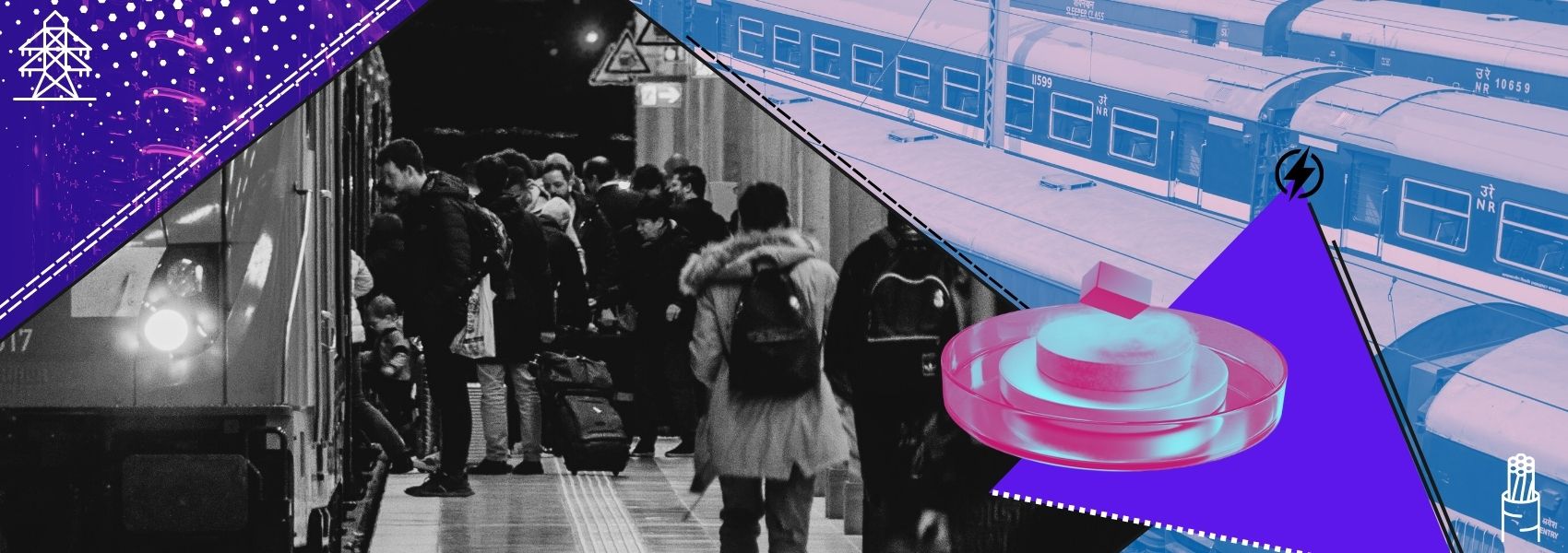Managing extreme loads and power demands
Railways face peak service times; data centers wrestle with intensive computing loads. Both require robust load balancing, real-time energy management, and power quality control.
High-Temperature Superconducting (HTS) cables meet these demands through exceptional transmission capabilities. They’re up to 10 times more compact than conventional cables, reducing land use and installation costs while eliminating energy losses entirely.
A single superconducting cable delivers over 2GW in AC and more than 3GW in DC, using a trench just 0.5 meters wide. This space-saving design proves invaluable in urban environments where land acquisition poses challenges. A 15kV AC HTS cable can transmit over 100 MVA at distribution levels—a significant market advantage.
Inside data halls, superconducting high-current low-voltage cables reduce required space by 24 times compared to conventional solutions. This ultra-compact design delivers ultra-high current density, virtually zero transmission loss, and dramatically cuts the overall footprint.
Ensuring reliability and redundancy
Continuous operation is non-negotiable for both sectors—downtime means delays, data loss, system failures, and safety risks. AI data centers demand “five nines” availability (99.999% uptime), while railways require similar redundancy to ensure 100% on-time departures and arrivals.
Superconducting cable systems include complete redundancy in both the High-Temperature Superconducting (HTS) cable and cryo-cooling system. Maintaining balanced loads ensures system redundancy, supporting the highest operational reliability standards. Superconducting fault current limiters (SFCLs) add critical protection by automatically limiting overload currents without disrupting service. This safeguards transformers and circuit breakers while enhancing grid stability, power quality, and overall reliability.
Solving power conversion challenges
Superconducting DC cables eliminate unnecessary conversions between renewable sources and end applications, avoiding the complexity and losses of traditional power electronics.
Yet, both sectors depend heavily on power electronics, typically involving AC-to-DC conversion through inverters or converters. Harmonics and filtering prove critical for maintaining power quality. Furthermore, superconducting cables produce no electromagnetic fields—a safe, trouble-free solution that avoids potential interference.
Optimizing cooling and thermal management
Cooling operations for traction electronics, substations, servers, batteries, and UPS systems present ongoing challenges in reducing power consumption and achieving higher performance standards.
Superconducting cables don’t emit heat. Compared to conventional resistive cables, they’re more compact and generate no heat, eliminating the need for additional HVAC cooling while reducing associated electrical load and CO₂ emissions, and thereby preventing overheating and minimising energy waste.
Unlocking renewable energy integration
Renewable energy integration has driven investment for years, increasing solar and wind use at stations, depots, and data centers—often with on-site solar and Battery Energy Storage Systems (BESS). Smart grid interaction, including demand response, load shifting, and peak shaving, is becoming standard.
Superconductivity acts as a game-changer for renewable integration. The HTS-DC pairing solves the renewable energy paradox: we can generate clean power, but struggle to deliver it efficiently where needed. Solar farms and wind turbines often sit far from cities, and every kilowatt lost during transmission means burning more fossil fuels to compensate.
Superconducting DC cables transport very large currents at low voltages over several kilometers with no voltage drop—ideal for connecting remote renewable sources to high-demand urban applications.
This capability enables fully carbon-free, modular energy solutions through Uninterrupted Power Plants (UPPs): modular microgrids integrating HTS low-voltage DC loops for maximum reliability and seamless off-grid operation. Both rail networks and data centers can operate on dedicated renewable microgrids, eliminating fossil fuel backup and achieving true carbon neutrality.
Superconducting cables transmit DC power with zero loss, making them ideal for solar panels operating at 1500V DC. They guarantee full power delivery, maximizing efficiency for rail tracks or data halls, and suit BESS systems where DC is transmitted efficiently using HTS cables.
Optimizing energy consumption
Increasing public and regulatory pressure to lower down energy consumption and carbon emission forces industries to transform and define upgraded electrical systems including
- Smart energy optimization including Alternative current and Direct Current electrical distribution
- Digital twins for simulation and energy modeling including the adoption of Innovative Grid Technologies (IGTs) – Superconductivity is part of those new technologies that are supporting the modernization of the grid.
- Modular design for energy scaling and fault isolation – the sFCL (superconducting Fault Current Limiters) are more and more considered as a way to reach the unmanned operation for sub-stations. No dependence on human factor in case of fault and the best protection for electrical equipment forming part of the substation.



